
Frank DeCaro no stranger to a man in a wig.
The writer, performer and talk radio host has been a fan of drag since he was three years old — seriously. Just for reference, that was slightly before a certain Drag Superstar™ premiered a televised drag competition that would end up hitting it mainstream and changing the art form forever.
His new book, Drag: Combing Through the Big Wigs of Show Business, from Rizzoli, takes a deep dive into the history of drag, profiling the big names and unsung legends alike who built drag into what it is today, one bottle of eyelash glue and pair of tucking panties at a time.
We caught up with DeCaro to find out what he discovered putting his oral history together (that’s right, we said oral), his most memorable drag moments over the years and his own drag alter ego.
How about we take this to the next level?
Our newsletter is like a refreshing cocktail (or mocktail) of LGBTQ+ entertainment and pop culture, served up with a side of eye-candy.
There is so much to digest in this book. So first things first, congrats on this superb history of drag. It’s a lot of fun to flip through, and even the most seasoned drag fan will certainly learn a thing or two. What did you discover in doing your research that you didn’t know before starting?
Before I began researching I didn’t realize quite how far back the drag tradition goes. I mean, I knew about crossdressing in ancient Greek theater and in the kabuki of Japan and the pantomime dames of the British music hall. But I didn’t know that modern drag as we know it – more or less – goes back at least to the early 20th Century.
The performer who is considered the grandmother of modern drag was Julian Eltinge and this is what blows my mind: He had a Broadway theater named after him in 1912. Nineteen-twelve! He was a star of high-profile stage shows, early Hollywood movies, and he even had his own lifestyle magazine for women. As I say in the book, he was the RuPaul, Charles Busch, and Brini Maxwell of his day.
One of the biggest takeaways from my research was that cool people – what they used to call “the smart set ” – have always sought out drag entertainment. It wasn’t truly mainstream the way it is today, and yet, it kind of was. It was a way to take a walk on the wild side, but not too wild, and people did.
What’s the first drag show you can remember seeing?
The first drag I remember seeing was on an episode of TV’s The Munsters in 1966. I was three years old and I saw Herman Munster get hit by a bolt of electricity and turn into a cocktail waitress. He was the first crossdresser that I ever saw. He was Frankenstein in barrel curls, but he was adorable!
I’ve had a weakness for men in dresses ever since that day. I love a woman in a chest wig, too, I should add. Lily Tomlin as her lounge lizard character Tommy Velour is heaven! She was my first drag king.
My first drag show was at a bar in East Orange, New Jersey called Charlie’s West. I was either in high school or home on break during my first year of college. I went with my first boyfriend. There was a queen there named Mimi who wore a sequined dress in the colors of the Italian flag. Her signature number was lip-synching to “Where the Boys Are.” When she got to the line, “I wait impatiently,” she made the hand gesture for masturbation. Some drag queens do death drops. This one jerked off to Connie Francis. I don’t know whatever happened to her, but I dedicated my book to Mimi because she made such an impact on me.
How about the most memorable?
The most memorable drag show I ever saw was Divine live at a club called La Cage in the early eighties in Chicago. She told a joke about a man and a woman, each with unwashed genitalia. The punch line was “Why don’t you two get together and make a Denver omelet!” It still makes me laugh…and throw up in my mouth a little. Bruce Vilanch, who wrote the foreword to my book, probably wrote that joke. It’s so funny and so gross.
The other most memorable drag show was held 25 years ago this summer. It was called “Charles Busch’s Dressing Up!” and it was part of the Stonewall 25 celebration in New York. It was at Town Hall – I talk about it in the book – and he brought in everyone who ever wore a dress on stage from Charles Pierce to Milton Berle. Even Bea Arthur – who isn’t technically a drag queen – was there. It was one of the greatest nights in drag history.
I also attended the Love Ball at Roseland in New York where many of us were introduced to “Vogueing.” There’s footage from that night in “Paris is Burning.” I can’t believe I was lucky enough to be in that room on that night.
Who do you think is the biggest unsung queen — who should be on everyone’s radar?
If you don’t know Dina Martina, you’re missing out on one of life’s most surreal pleasures. Also, if you don’t love her, we can’t be friends. She is the most deranged, unpredictable, and likeably tragic performer ever. I absolutely adore her. When I was doing my radio show, we had her on every chance we got. Even my cohost, who was a truly tough audience, especially for drag, was mad for Dina. If you’re in Provincetown or her hometown of Seattle, you MUST see her.
I love that the chapter on RuPaul’s Drag Race doesn’t come until page 214. What do you want younger fans, some of whom grew up watching Drag Race as kids and have no frame of reference for drag outside of the show, to take away from your book?
This book was written for them and anyone who thinks drag began with season one of Drag Race. I wanted these kids to know how long the tradition of crossdressing in show business truly is. It’s very rich and so worth diving into. The genuinely brilliant queens of today – from Mama Ru on down – know the “herstory” of drag. They can quote Divine and Flip Wilson’s drag character, Geraldine, sing Sylvester songs, and dance the Time Warp like the best “Sweet Transvestite.” Ginger Minj knows her shizzle and you should, too. As one of the reviews of the book said, “Drag” is a history lesson for some and a walk down memory lane for others. The book is pop culture in a yummy package.
What’s the reaction to the book been like so far?
It has been so good that I’m plotzing. People are loving “Drag: Combing Through the Big Wigs of Show Business” even more than I hoped they would. After only two weeks, we went into a second printing! Rizzoli, the publisher, is very happy with the book’s performance. And there has been so much positive media surrounding it. I feel very lucky because it is exactly the right time for this book to come out. I’m so glad I missed my deadline by a year! Now I’m hoping the enthusiasm for the book will help us sell it as the basis for a 10-part documentary series on the history of drag. That’s my new goal.
The history of American drag, as you note so eloquently, is subversive. Is drag political by nature?
I think drag comes in as many flavors as there are at Baskin Robbins – you can be a gorgeous fashion queen like Violet Chachki, a performance artist like Sasha Velour, a clown-in-a-gown like Bianca Del Rio, or anything in between.
I wanted to show in the book that such variety has long been the case. That’s why I single out drag legends – “big wigs,” as I call them – like Divine, who was the ultimate proto-punk, and also a traditional Barbra Streisand impersonator like the late, great Jim Bailey. They were working at the same time, but at different ends of the mascara wand, if you will. A lot of people know Divine and they should. But Bailey is worth learning about, too. He, I kid you not, performed in drag on a primetime network TV salute to the Super Bowl in the late Seventies. He arrives in an open convertible dressed as Streisand in “A Star is Born” singing “Don’t Rain on My Parade.” It’s on YouTube. You’ll die when you see it. It couldn’t be more camp. THAT’S subversive.
What’s also subversive to me – in the best way possible – is Drag Race winning the reality competition Emmy over The Voice. That’s the real “Ru-volution,” as we say. That addictive little show about men in dresses has done more to prove that drag queens live – and deserve to live – lives as full as anybody else in America. You really can’t say enough about the power of Drag Race in terms of normalization, if you will. As LGBTQ people, we owe it a real debt.
What did you think of the MET Gala’s “Camp: Notes on Fashion” theme?
I was the bartender on Watch What Happens Live the other night – I have to work that into every conversation now – and RuPaul, who actually attended the gala, said not a lot of people who walked the pink carpet got it. They didn’t understand the meaning of “camp,” which granted is a nebulous concept.
Katy Perry dressed as a chandelier is fabulous, but it’s not camp. Billy Porter carried in on a sedan chair by a fleet of musclemen, that’s a lot more like it. What I wanted to see at the Met Gala was Cyndi Lauper and Madonna attending the event dressed as Blanche and Baby Jane Hudson. Can you imagine Miss Kinky Boots pushing Madame X in a wheelchair? That would have been divine. Hell, someone dressed as Divine at the Met Gala would have been divine!
That said, the exhibit at the Metropolitan Museum is so much fun – a real eye-popper! I had such a good time when I went last weekend!
What’s your drag name?
I played a Zumba-dancing Jewish mother named Goldie in a web series named Spooners, which is very funny. I look like a Far Side cartoon. I also performed on stage once as Phatti LuPone, Patti’s twin sister. That was such a hoot. She needs to make a comeback. Her signature song is “Everything’s As If Never Said, ‘No Thanks’.” It’s about being fat, which I really was in those days. My actual girl name, though, has been Phyllis since I was in high school.
Does she ever step out into the world?
My closest friends still call me Phyllis when I misbehave. But she has never existed as a drag character – at least not yet. My few drag alter egos have had very short shelf lives and the reason is obvious. I always hope I’ll be glamorous in a dress, but even in my favorite leopard print, I look like Andrea Martin as Edith Prickley on “SCTV” in the Seventies.
Where can we find your book?
Drag: Combing Through the Big Wigs of Show Business is available on Amazon and at Barnes & Noble and at fine booksellers everywhere. An audio companion from Audible is coming in late May – and Lady Bunny co-narrates it with me! You really do need both if you’re a drag fan, though. The photos in the book are gorgeous and it is so beautifully designed. As I like to say, “Drag” is what well-dressed coffee tables are wearing this spring!
I’m also going to be doing a panel with Leslie Jordan, Miss Coco Peru, Drew Droege, and James St. James at RuPaul’s Drag Con on May 26. Then we’re doing signing events at 7 p.m. on June 4 at Barnes & Noble at the Grove in Los Angeles, and on June 26 at Barnes & Noble Union Square in New York. I post all of these on social media @frankdecaroshow. Also, every morning I post “Your Drag Moment of the Day” photos on Instagram and I’m always looking for nominations!
Dan Tracer is a queer writer, noisemaker, and amateur astral projector. Find him on Instagram.
This article includes links that may result in a small affiliate share for purchased products, which helps support independent LGBTQ+ media.




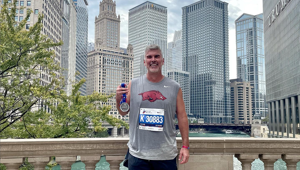
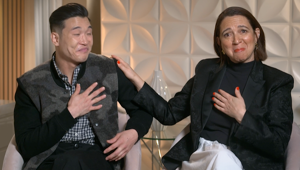


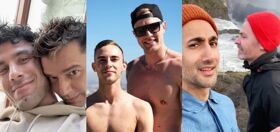

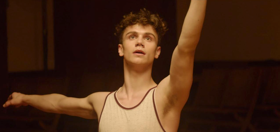
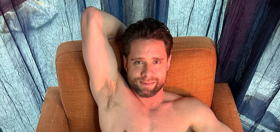
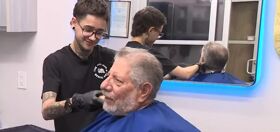
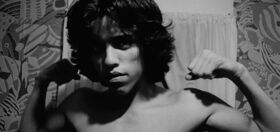



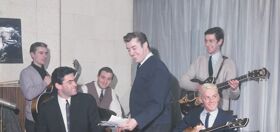
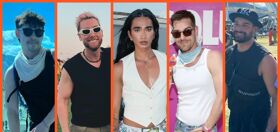



Paulie P
the book is ok… filled half with recognizable faces and then a bunch of others… the first half, better,